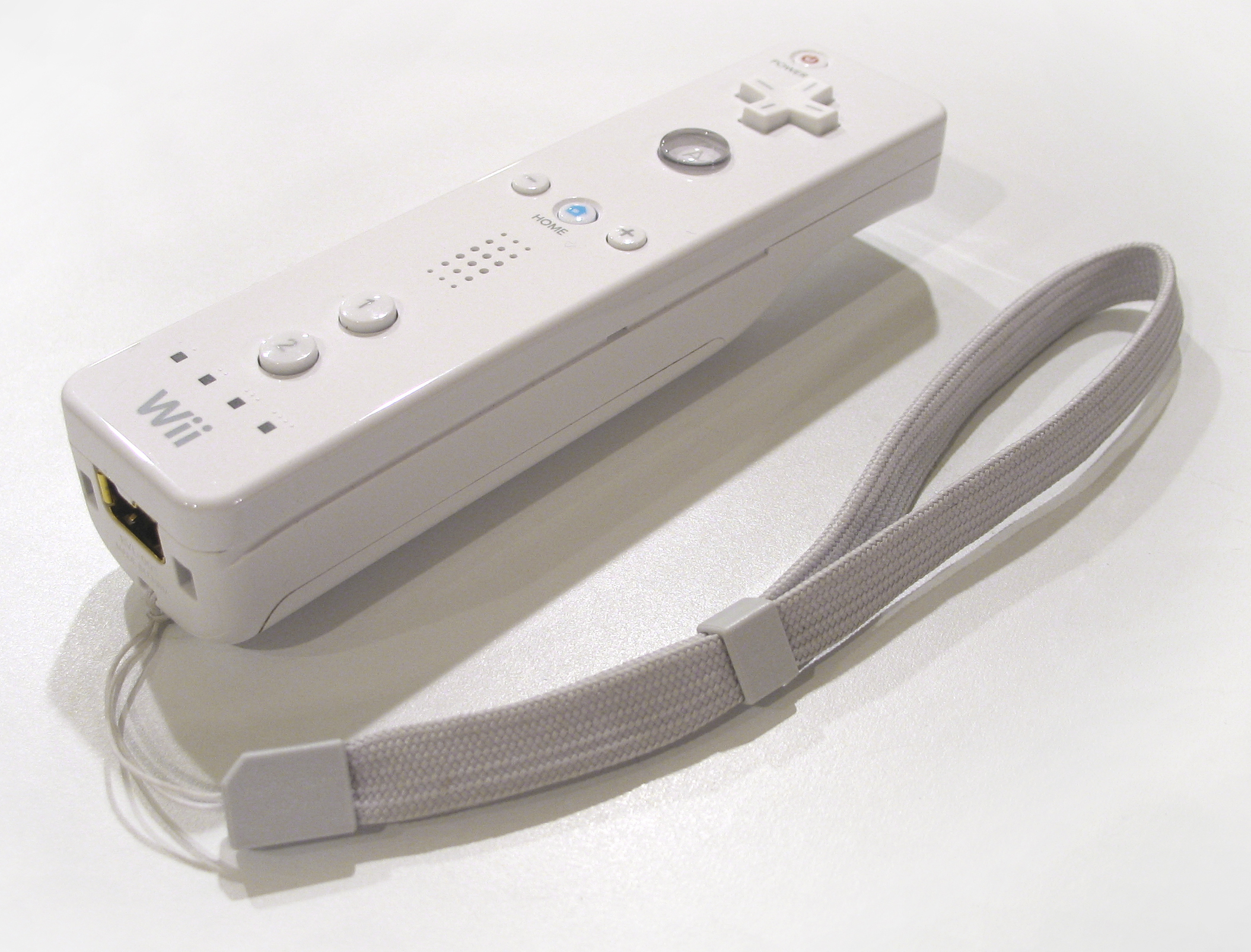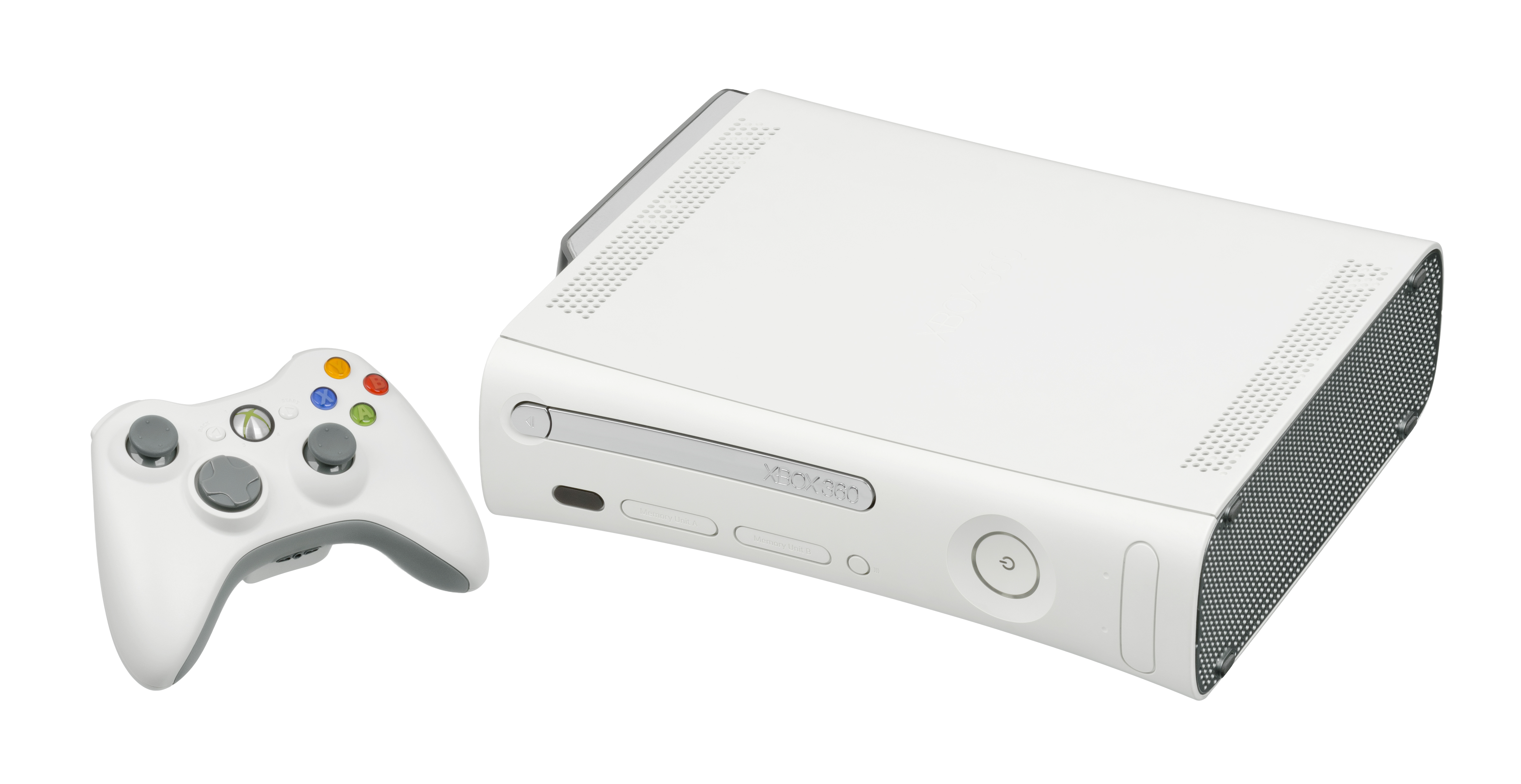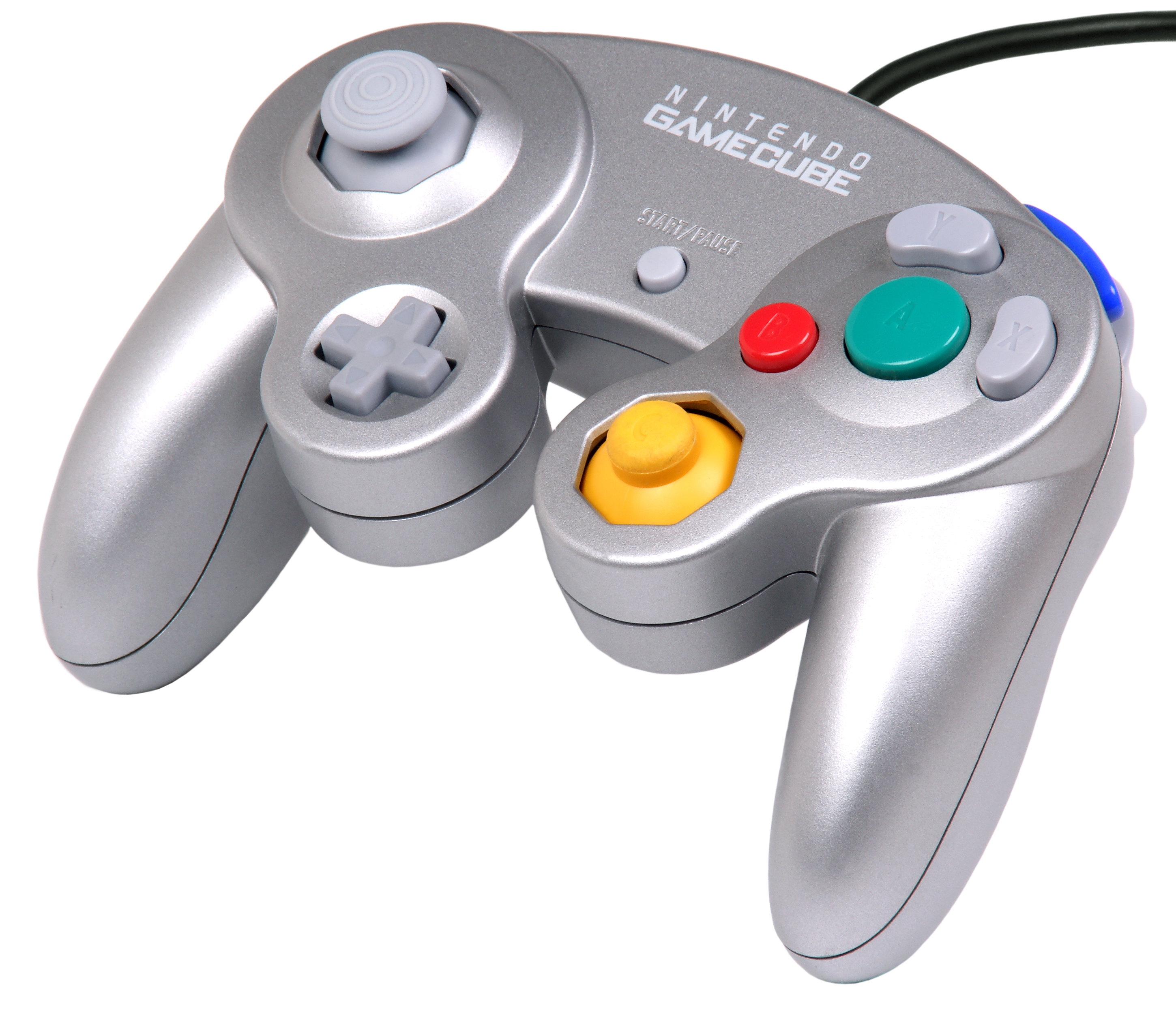|
Wii
The Wii ( ) is a home video game console developed and marketed by Nintendo. It was released on November 19, 2006, in North America, and in December 2006 for most other regions of the world. It is Nintendo's fifth major home game console, following the GameCube, and is a seventh-generation console alongside Microsoft's Xbox 360 and Sony's PlayStation 3. Nintendo president Satoru Iwata directed the development of the Wii with a strategy focused on appealing to a broader audience through innovative gameplay, rather than competing with Microsoft and Sony on raw computational power. Shigeru Miyamoto and Genyo Takeda led the project, which was initially codenamed Revolution. The result was a console that emphasized new forms of interaction, particularly through its wireless controller, the Wii Remote, which featured motion-tracking controls and could recognize gestures and function as a pointing device. The Wii was Nintendo's first console with native Internet connectivity, e ... [...More Info...] [...Related Items...] OR: [Wikipedia] [Google] [Baidu] |
Wii System Software
The Wii system software is a set of updatable firmware versions and a software frontend on the Wii, a home video game console. Updates, which could be downloaded over the Internet or read from a game disc, allowed Nintendo to add additional features and software, as well as to patch security vulnerabilities used by users to load homebrew software. When a new update became available, Nintendo sent a message to the Wii Message Board of Internet-connected systems notifying them of the available update. Most game discs, including first-party and third-party games, include system software updates so that systems that are not connected to the Internet can still receive updates. The system menu will not start such games if their updates have not been installed, so this has the consequence of forcing users to install updates in order to play these games. Some games, such as online games like '' Super Smash Bros. Brawl'' and '' Mario Kart Wii'', contain specific extra updates, su ... [...More Info...] [...Related Items...] OR: [Wikipedia] [Google] [Baidu] |
Wii Remote
The Wii Remote, colloquially known as the Wiimote, is the primary game controller for Nintendo's Wii home video game console. An essential capability of the Wii Remote is its motion sensing capability, which allows the user to interact with and manipulate items on screen via motion sensing, gesture recognition, and pointing using an accelerometer and optical sensor technology. It is expandable by adding attachments. The attachment bundled with the Wii console is the Nunchuk, which complements the Wii Remote by providing functions similar to those in gamepad controllers. Some other attachments include the Classic Controller, Wii Zapper, and the Wii Wheel, which was originally released with the racing game '' Mario Kart Wii''. The controller was revealed at the Tokyo Game Show on September 14, 2005, with the name "Wii Remote" announced April 27, 2006. The finalized version of the controller was later shown at E3 2006. It received much attention due to its unique features, ... [...More Info...] [...Related Items...] OR: [Wikipedia] [Google] [Baidu] |
Seventh Generation Of Video Game Consoles
The seventh generation of home video game consoles began on November 22, 2005, with the release of Microsoft's Xbox 360 home console. This was followed by the release of Sony's PlayStation 3 on November 17, 2006, and Nintendo's Wii on November 19, 2006. Each new console introduced new technologies. The Xbox 360 offered games rendered natively at high-definition video (HD) resolutions, the PlayStation 3 offered HD movie playback via a built-in 3D Blu-ray Disc player, and the Wii focused on integrating controllers with movement sensors as well as joysticks. Some Wii controllers could be moved about to control in-game actions, which enabled players to simulate real-world actions through movement during gameplay. By this generation, video game consoles had become an important part of the global IT infrastructure; it is estimated that video game consoles represented 25% of the world's general-purpose computational power in 2007. Free access to the article through martinhilbert.n ... [...More Info...] [...Related Items...] OR: [Wikipedia] [Google] [Baidu] |
Nintendo Optical Discs
Nintendo optical discs are physical media used to distribute video games on three of Nintendo's consoles that followed the Nintendo 64. These are the GameCube Game Disc, Wii Optical Disc, and Wii U Optical Disc. The physical size of a GameCube Game Disc is that of a miniDVD; Wii Optical Discs are based on DVD format, and Wii U Optical Discs are based on Blu-ray format. To maintain backward compatibility between generations of game consoles, GameCube discs are compatible with the first model of the Wii, and Wii Optical Discs are compatible with the Wii U. A burst cutting area is located at the inner ring of the disc surface. All official discs and their formats were manufactured and developed by Panasonic. In 2017, Nintendo discontinued disc-based media for physical game releases in favor of game cards for the Wii U's successor, the Nintendo Switch, although it would license several more physically released Wii and Wii U games for many more months, with the last one being a port ... [...More Info...] [...Related Items...] OR: [Wikipedia] [Google] [Baidu] |
Nintendo IRD
commonly abbreviated as Nintendo IRD, was a division of Nintendo that developed video game console hardware and associated peripherals. Originally established in 1980 with engineer Genyo Takeda acting as manager, Nintendo Research & Development No. 3 Department and part of the ''Manufacturing Division'', the department was responsible for various hardware technologies and even developed several arcade and console titles. In 2000, as technology evolved into the 3D era, Takeda's group spun-off and established itself as a division into ''Integrated Research & Development Division'', and began spending longer periods of time researching and testing the various and rapidly evolving hardware that would power Nintendo's next generation of consoles. The Nintendo IRD Division was broken up into two departments: the ''Integrated Research & Development Department'' (or ''IRD''), which focused on the development of Nintendo home video game console hardware and associated peripherals, and t ... [...More Info...] [...Related Items...] OR: [Wikipedia] [Google] [Baidu] |
Hollywood (graphics Chip)
Hollywood is a System on a chip, system-on-a-chip (SoC) designed by ATI Technologies, ATI for Nintendo's Wii home video game console, integrating graphics, audio, and input/output functions into a single module. Its graphics processing unit (GPU) is an updated version of the GameCube's ATI Flipper, Flipper, running at 243 MHz—1.5 times faster—allowing for more advanced visual effects. Additionally, Hollywood includes ''Starlet'', an ARM architecture family, ARM-based coprocessor responsible for managing input/output operations and system security. The SoC also features 24 MB of high-speed 1T-SRAM for efficient data access. The initial ''Hollywood-A'' revision was built on a 90 nm process and contained three dies. The first die, codenamed ''Vegas'', handled most of the chip's functions. The second die, codenamed ''Napa'', housed the high-speed RAM, while a third die contained EEPROM. The ''Hollywood-1'' revision, codenamed ''Bollywood'', was manufactured on a 65 nm process an ... [...More Info...] [...Related Items...] OR: [Wikipedia] [Google] [Baidu] |
Broadway (microprocessor)
Broadway is the codename of the 32-bit central processing unit (CPU) used in Nintendo's Wii home video game console. It was designed by IBM, and was initially produced using a 90 nm Silicon on insulator, SOI process and later produced with a 65 nm Silicon on insulator, SOI process. According to IBM, the processor consumes 20% less power than its predecessor, the 180 nm Gekko (microprocessor), Gekko used in the GameCube video game console. ''Broadway'' was produced by IBM at their semiconductor development and manufacturing facility in East Fishkill, New York, East Fishkill, New York (state), New York (now owned by GlobalFoundries). The bond, assembly, and test operation for the Broadway module was performed at the IBM facility in Bromont, Quebec, Bromont, Quebec. Very few official details have been released to the public by Nintendo or IBM; unofficial reports claim it is derived from the 486 Hertz, MHz Gekko (microprocessor), Gekko architecture used in the GameCube and runs 50% ... [...More Info...] [...Related Items...] OR: [Wikipedia] [Google] [Baidu] |
Official Nintendo Magazine
''Official Nintendo Magazine'', or ''ONM'', was a British Video game journalism, video game magazine that ran from 2006 to 2014 that covered the Nintendo DS, Nintendo 3DS, Wii, and Wii U video game consoles released by Nintendo. Originally published by EMAP as ''Nintendo Magazine System'', the magazine first covered the Nintendo Entertainment System, Super Nintendo Entertainment System and Game Boy consoles, and was later renamed to ''Nintendo Magazine'', ''Nintendo Official Magazine'' then, briefly, ''Nintendo Official Magazine UK''. Under these names, it was published by EMAP for twelve years, before the rights were sold to the publisher, Future plc. The first issue by Future plc was released on 16 February 2006. The magazine then ran for eight years and eight months, concluding with its 114th issue, released on 14 October 2014. The similarly-titled Australian version was a follow-up of ''Nintendo Magazine System (Australia), Nintendo Magazine System''; it is not to be con ... [...More Info...] [...Related Items...] OR: [Wikipedia] [Google] [Baidu] |
GameCube Memory Card
GameCube accessories are hardware that are compatible with the Nintendo GameCube home video game console, which first launched in 2001. Accessories can be either first-party releases from Nintendo or third-party devices from an outside manufacturer. First-party accessories include the GameCube controller, the WaveBird Wireless Controller, audio/video cables, memory cards, link cables, Broadband adapters, the Game Boy Player, a microphone, development tools, and carrying cases. Third-party companies such as Datel and Mad Catz produced their own versions of some first-party devices along with specialized accessories of their own. First-party and licensed Controllers GameCube controller The GameCube controller was released alongside the console and comes bundled with every unit. Standard colors include Indigo, Black, Spice (orange), Emerald Blue (green, only available in Japan), Platinum, Indigo-clear, and Pearl White (only available in Europe). There are also limited edition con ... [...More Info...] [...Related Items...] OR: [Wikipedia] [Google] [Baidu] |
Home Video Game Console
A home video game console is a video game console that is designed to be connected to a display device, such as a television, and an external power source as to play video games. While initial consoles were dedicated units with only a few games fixed into the electronic circuits of the system, most consoles since support the use of swappable game media, either through game cartridges, optical discs, or through digital distribution to internal storage. There have been numerous home video game consoles since the first commercial unit, the Magnavox Odyssey in 1972. Historically these consoles have been grouped into generations lasting each about six years based on common technical specifications. , there have been nine console generations, with the current leading manufacturers being Sony, Microsoft, and Nintendo, colloquially known as the "Big 3". Overview A home video game console is a pre- designed piece of electronic hardware that is meant to be placed at a fixed location a ... [...More Info...] [...Related Items...] OR: [Wikipedia] [Google] [Baidu] |





